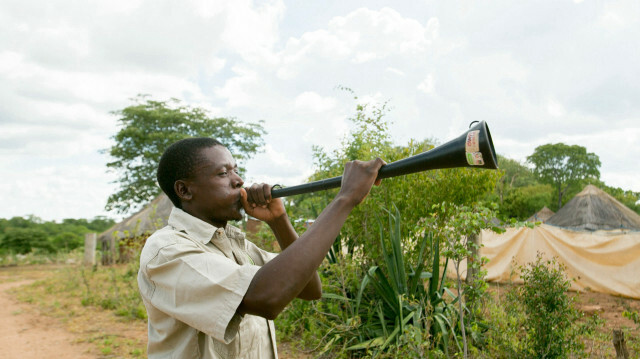Known for its massive annual migration of wildebeest and zebra, Tanzania’s Serengeti National Park is also known for rising number of human-wildlife conflicts
News Service March 17, 2022

File photo
Farmers living along the fringes of Serengeti National Park in northern Tanzania are being trained to coexist with wild animals, a move designed to reduce human-wildlife conflict.
Known for its massive annual migration of wildebeest and zebra, Serengeti National Park is also known for the rising number of conflicts, as stray lions and other animals attack livestock and in retaliation, angry farmers go after the endangered species.
Speaking to Anadolu Agency, Jenemary Ntalwila, a training facilitator from Tanzania Wildlife Research Institute (TAWIRI), said they have introduced modern technology to help communities surrounding the park and have also identified hot spot areas where violent encounters take place between humans and wild animals.
“We want to bring real-time information on the movement of angry animals to the villagers so that they are aware of the danger,” he said.
He said the villagers are taught to use special mobile devices, donated by the Frankfurt Zoological Society (FZS), which can send information in real-time, as well as binoculars, torches, and vuvuzela.
Vuvuzela is a homemade trumpet that when blown produces a deafening sound enough to scare away wild animals.
“We hope this training will raise people’s awareness and help them prevent unnecessary clashes with wild animals,” said Ntalwila.
One can see, villagers using these techniques to scare away baboons and elephants, who often destroy crops. These gadgets also track the movement of lions to protect their livestock especially cows and goats.
Loseryan Kulangai, a resident of Nyichoka village, said the use of technology to track wild animals has simplified his work and has also helped him detect the presence of angry wild animals in the vicinity.
- Easy-to-use devices
“The devices are easy to use, and they have helped me and my friends track lions and also alert the community to take care of livestock,” Kulangai said.
Ntalwila said the initiative called the community coexistence training program has been designed to equip villagers with knowledge and necessary skills to prevent their conflict with wild animals.
The innovative early warning system provided by FZS helps in the early detection of lions and leopards.
It uses traditional infrared sensors and thermic sensors capable of detecting species both at night and in areas with dense vegetation.
Serengeti national park – a UNESCO world heritage site is home to Africa’s largest colony of lions, a species considered endangered with its population keeps on declining every year.
In the Serengeti district, as elephants lose their forest habitats, they often invade nearby villages and trample on crops even killing people.
Farmers, who exclusively rear cattle are being taught to protect livestock by building predator-proof bomas (livestock corrals) as well as engaging in daytime herding practices.
“We have told them never to poison lions in retaliation because doing so would harm other critically endangered species including vultures,” he said.
William Oleseki, the founder of Copelio, a local charity group, said while it is not easy to avoid all conflicts, conditions can be created where the interests of both people and wildlife are mutually satisfied.
He said lions can stray from the park for various reasons including dwindling prey, competition with other predators.
“The communities here are always vulnerable to this kind of conflict,” Oleseki said.
Although villagers have always used traditional methods to prevent the clashes, the methods have largely proven inadequate.
No comments:
Post a Comment